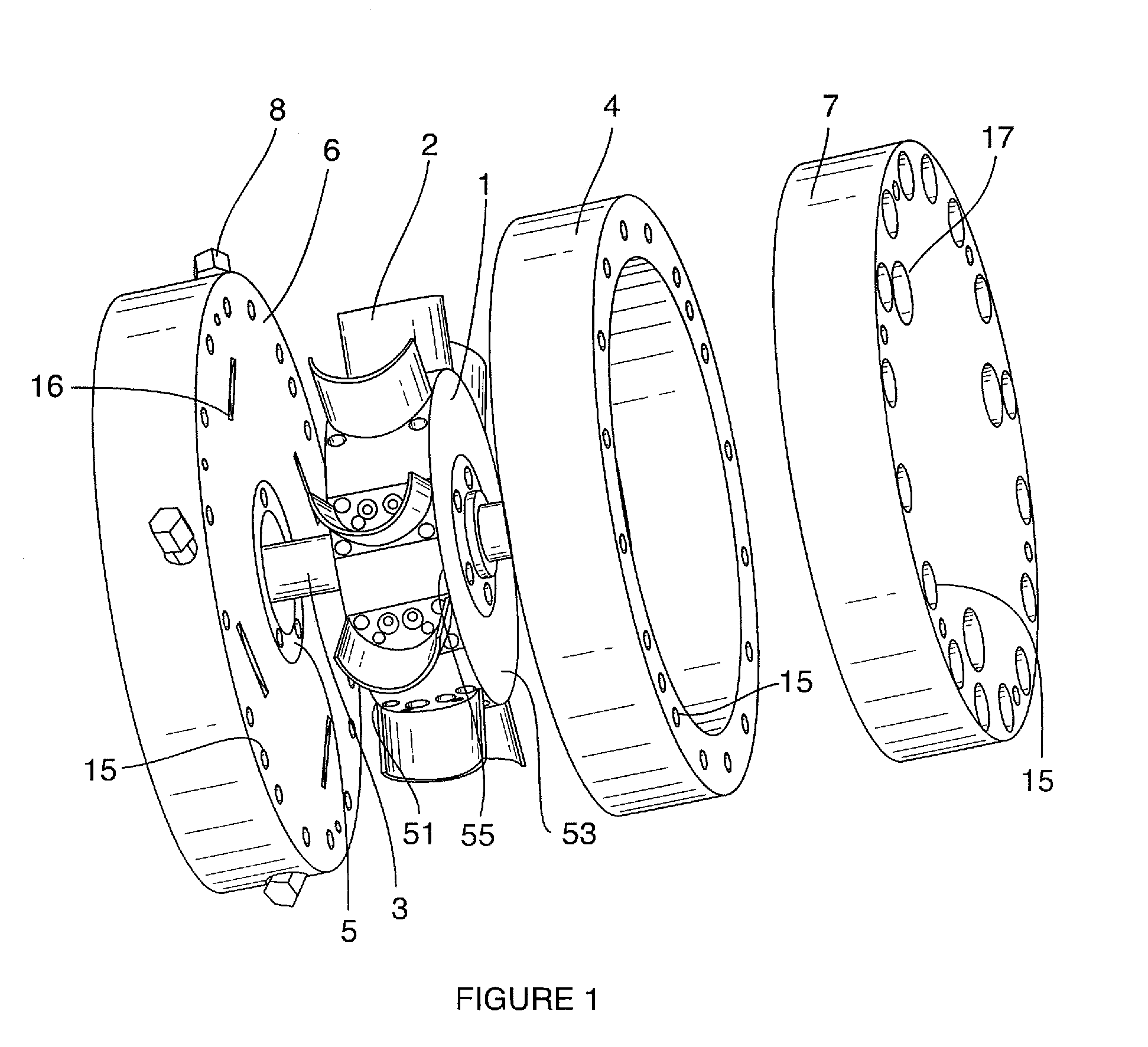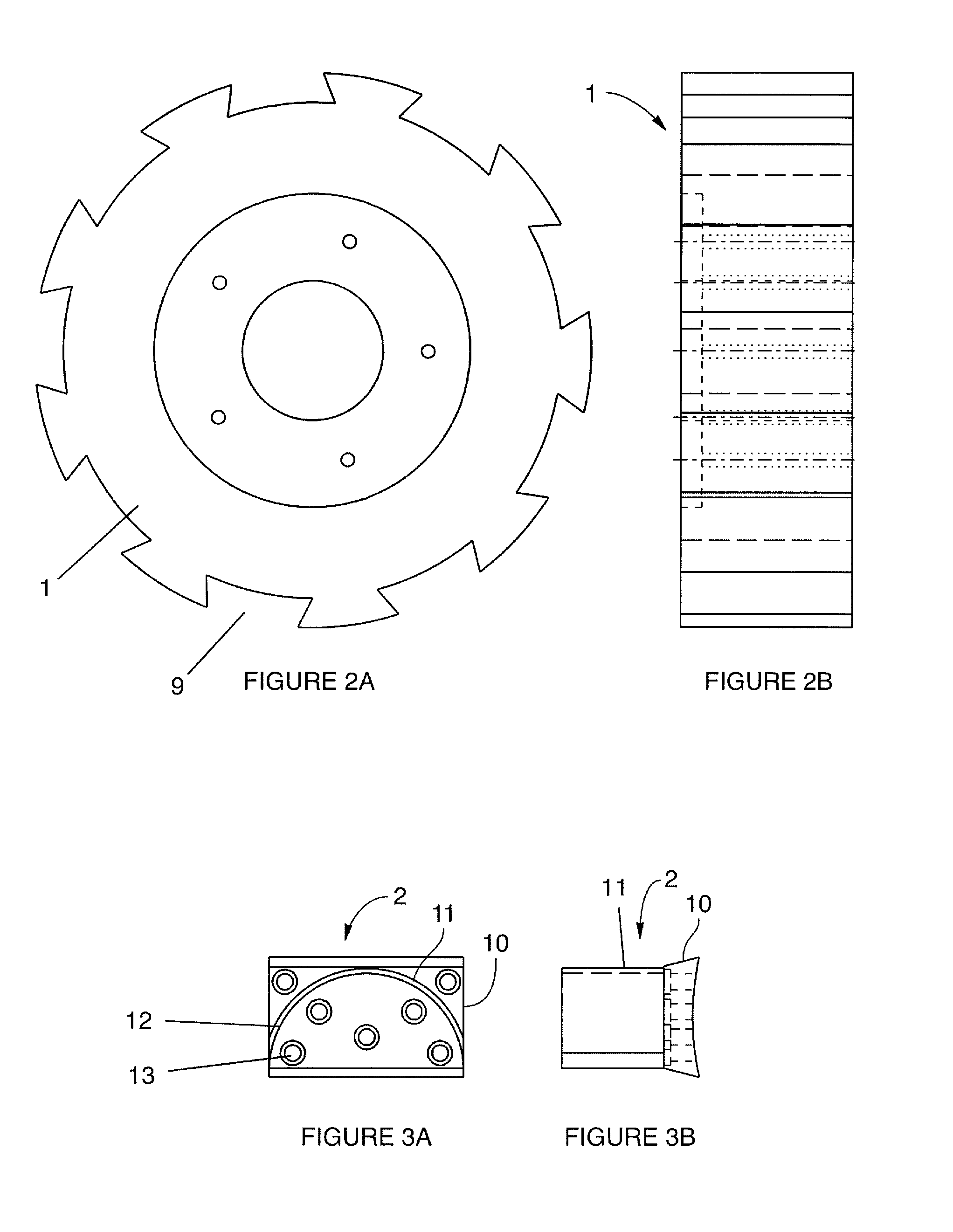[0029]A rotating shaft is able to perform work, and this is accomplished by
coupling the shaft to an electrical generating device thereby producing electrical power. Very large volumes of useful, moderate pressure gas are produced easily in this invention, at low temperatures, by using a working fluid such as a
refrigerant. For instance,
refrigerant R134 is one possible type of working fluid. Many other standard
refrigerant types are also suitable. This refrigerant, in its liquid form, will boil very readily at low temperatures and pressures, and produce voluminous amounts of hot gas after being heated. R134 gas is particularly suited for this purpose, and completely avoids the need for high pressures and temperatures.
[0030]The blades mounted on the rotating member of the instant invention are not of traditional design. Prior art blades tend to be made for either
high pressure and temperature gas flows—like in a
jet engine for instance—or for flows of liquids, especially water, as in a hydroelectric
plant for instance. These blades do not function well for low pressure and temperature gasses. The instant invention overcomes the limits of the prior art by combining a unique blade design with a particular design, to thereby extract power effectively under the desired conditions.
[0033]The force generated by the velocity of the gas flow is a vector quantity, and so a change in direction can be as effective as a change in speed. So, rather than have the flow
crash to rest up against the blade surface, the blade surface is curved, and in turn the flow is also turned almost 180 degrees. This produces a
momentum change almost double that than if the flow had been brought to rest against the blade. The combination of very high (even supersonic) velocities and radical change in direction result in a very large change in
momentum. Thus a large reaction force is exerted on the blade.
[0035]Additionally, to extract even greater performance from the whole
system energy is recovered on both the input and exhaust of the turbine loop of the power
system. On the input side of the engine, heat is brought from the
external source to the
heat exchanger serving the turbine loop. This is done by circulating a
heat transfer fluid from the heat source over to the
heat exchanger. Obviously not all of the available heat in the
stream of
heat transfer fluid will be absorbed into the engine in a
single pass through. If the fluid were discarded at that point, the heat not absorbed would be lost. The system employs a pump and a loop to recirculate the fluid back to the source, and thence back around to the engine. In this way the heat is not wasted, and is presented again and again to the engine and is ultimately nearly all used. Even the energy required to operate the pump is imparted to the flow, and thus captured and circulated around the process for eventual use.
[0036]On the exhaust side of the turbine loop, a similar process is employed. The heat not converted in the engine to
electricity is gathered up in a
heat exchanger, and passed over into a
recovery loop. This
recovery loop is essentially a
heat pump, and is used to raise the temperature of the working fluid back up, and it is then presented to another heat exchanger. This heat exchanger in turn is used to inject the heat back into the primary loop of the engine, at an appropriate point. Even the energy used to run the compressor in the
heat pump is captured in the working fluid, and is injected into the engine for use. The combination of
recovery of heat, and reuse of heat, on both the input and the exhaust sides of the engine is extremely effective and makes far more
power output available than would otherwise be the case, with a given heat source.
[0039]It is yet another objective of the instant invention that is capable of efficiently utilizing low temperature heat sources and low pressure working fluids to generate substantial energy.
 Login to View More
Login to View More  Login to View More
Login to View More 


